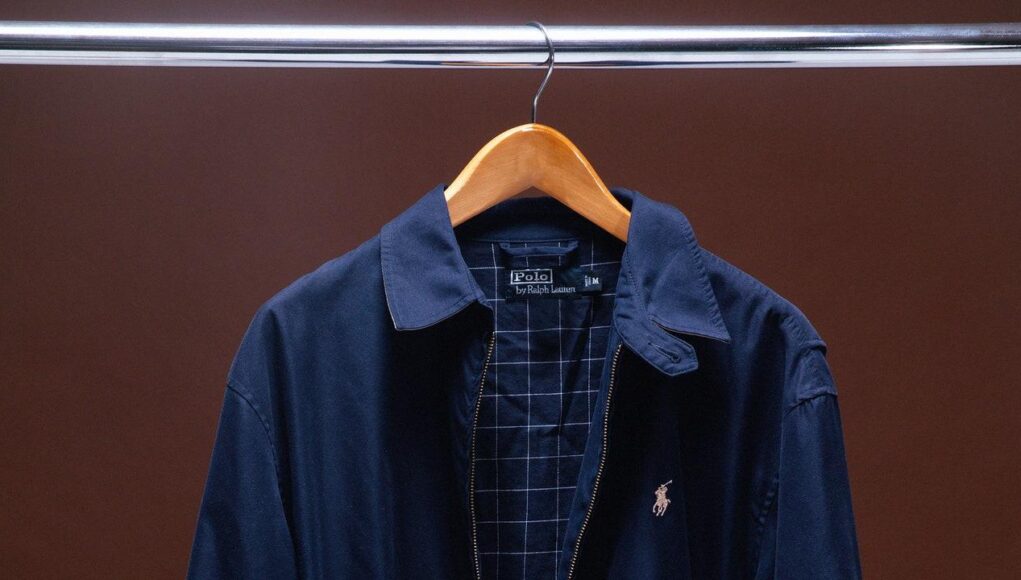My grandfather, Morris, as I knew him, was not a fashionable man. So much of his wardrobe came from Costco that when he died in 2018, my mother had to dig through his closet to find something to bury him in that didn’t have a Kirkland Signature label. After he died, we found an old box of Kodak slides that stretched from the mid-1950s to the early 1980s. There we found photos of my grandfather (or Papo, as we called him) dressed as I’d never seen him, wearing a stately black blazer with a gold button or—to my absolute delight—a very ’70s pair of high-waisted plaid trousers. But by the time I was born, Papo could almost always be found wearing his signature outfit: a pale yellow polo or baby blue button-down, khakis, New Balance sneakers, and a navy Polo Ralph Lauren windbreaker.
After my grandmother, Dolores, died in 2019, I inherited a few of her belongings—some jewelry, her lipstick holder, and her cherished Burberry trench coat that she bought on a trip to London. But I didn’t have anything of Papo’s to remember him by. I wanted something that reminded me that, for 19 years, we existed on earth together. I worried that without a physical memento to ground me, my memories of him would fade. I was afraid of losing the sound of his voice, the taste of his homemade minestrone, the weight of a Ziploc bag of loose change he would give my brother and me to sort through. I also knew that without him, there was so much of his story that would go forever untold because, more than a beloved grandfather, Morris was also a Holocaust survivor.
Eighty years ago today, on April 11, 1945, Morris was liberated from the Buchenwald concentration camp in Weimar, Germany. At 80 lbs., he was in the end stages of deterioration, near death from starvation and exhaustion. “I do not remember any great joy or jubilation on the liberation,” he wrote in his memoir for the USC Shoah Foundation. “What does one feel on having his death sentence commuted? For almost six years, we lived with a death sentence over our heads. I don’t think that many of us expected to survive.” And so many didn’t. His sister Hania was murdered in Treblinka; his mother Chana died in Bergen-Belsen.
I’ve known about the Holocaust and my family’s history for nearly as long as I can remember. But Papo didn’t like to talk about his experience, especially not with his four grandchildren. (“How do you ‘tell’ a child or young teenager [about the Holocaust] without poisoning their outlook on life?” he wrote. “Must the children of survivors bear a heavier burden than the children of those who did not go through the hell? This is a terrible burden.”) But when I was around 13, my mom shared his Shoah Foundation memoir, which is preserved in a collection of visual and written testimonies from Holocaust survivors. In it, I found a completely different man—a man who had been dehumanized and brutalized and didn’t imagine a world in which he survived the war. I couldn’t reconcile that this was my sweet Papo. I struggle to, even now.
I went to my grandparents’ house for the last time on January 1, 2020. My mom was selling the house and donating its contents. As I prepared to leave the home that hosted countless Passover Seders, Rosh Hashanah dinners, and birthday celebrations for the last time, I opened the coat closet to find my grandparents’ jackets hanging inside. I plucked Papo’s navy blue windbreaker off the hanger, its microfiber shell soft as velvet in my hands.
I’ll admit, I wasn’t sure how a 96-year-old man’s windbreaker would work in my wardrobe, but it did. When I started wearing it, I was taken aback by just how many compliments it received. I’m even more tickled by how many young men have adopted his uniform—New Balance sneakers, button-downs, and Polo windbreakers. The first time I saw a hip, young Brooklynite wearing what I would affectionately call Morriscore, I laughed out loud. But it also made me happy to see him in the world in unexpected places.
My relationship with my Papo seemed entirely marked by intangibility. He was a man of few words: a simple shoulder shrug or a small nod said it all. When I think of him now, what springs to mind is the way he would reach over and place his hand atop mine when we were sitting next to each other, or how, when I would call, he would perk up with a sing-songy Hi, sweetie!
Morris managed to distill six years of internment, torture, and unfathomable horror into just over 27 pages; I can only imagine what I will never know—what the world will never know—of his experience. Not only do I grieve him as a grandfather, I grieve the pieces of his story that are lost. Yes, the eyewitness accounts of incomprehensible evil, but also the stories of family I never knew. His jacket, to me, is a way to keep him close to me, a reminder that it is my responsibility—and privilege—as his granddaughter to keep his legacy alive. I don’t wear Papo’s jacket as much as I did in the first few years after his death, but I will often break it out around his liberation, or his birthday, or Yahrzeit. Some days, I just wear it because I miss him.









